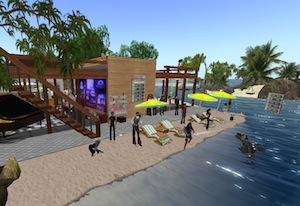 As reported today in the mainstream press, Telstra have announced their retreat from involvement with Second Life.
As reported today in the mainstream press, Telstra have announced their retreat from involvement with Second Life.
As the Australian business with the largest investment in Second Life by far, Telstra’s withdrawal potentially has a large impact on the local case for involvement of business in virtual worlds. More importantly, there are many hundreds of BigPond regulars who are affected by the decision. Paying residents on the BigPond sims received the following notecard on the issue:
Dear Residents, Vendors and Guests,
Telstra BigPond would like to thank you for participating in Second Life through BigPond. Our creative experience with Second Life has been very rewarding for both BigPond and our members. We’re constantly looking for ways to take advantage of the latest social media trends, however, our focus is moving towards entertainment options that are gaining in popularity on computers, mobile phones, TVs and game consoles.
From December 16 you will still be able to continue your Second Life experience directly through Linden Lab at www.secondlife.com but no longer through the BigPond portal.
This will also mean that all Second Life use will go towards your download limits given that the BigPond islands currently unmetered for BigPond customers are closing. Please note that this may put you over your plan download limit sooner than you were expecting.
Please contact our in-world Social Operations Manager Peta Philbin if you have further questions and she will provide information and/or BigPond Support personnel to assist you.
Again, we hope that you continue to enjoy your Second Life experience and keep checking back at www.bigpond.com for other exciting BigPond services.
Regards
The BigPond Team
Is the announcement a surprise? Not really – Telstra’s been increasingly lukewarm over recent months in regards to continued development of new activities / events on the sims. That said, the community that’s been built by BigPond customers on the sims has never wavered and there’s plenty of them angry at the decision. The common theme from discussions with residents today revolved around the theme of only having entered Second Life initially because of the unmetered status for Second Life usage (on BigPond sims), and the subsequent meeting up with people that they otherwise would never have met.
Obviously Telstra don’t need a presence for that to occur, but they certainly created a financial and aesthetic environment that maximised the potential for new users’ involvement. It’s been one of the more notable examples worldwide of a successful collaboration between a business and its customers, with examples everywhere of that relationship:
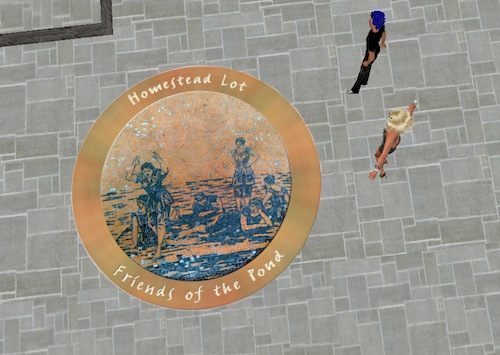
The biggest challenge for Telstra is how it portrays its withdrawal in the longer term. It’s likely been a financial decision, and if so it begs the question of how transparent Telstra will be on the outcomes they feel they’ve got from being in Second Life, and whether they’ll make further forays in the future. We touched base with Peta Philbin, who is the ‘Pond Estates Social Operations Manager’, but she wasn’t able to comment at all, referring me to BigPond’s PR contact, Craig Middleton. We’ve sent Craig a series of questions and will post his responses in full as soon as we receive them. There’s also a farewell party planned for 21st November – we’ll publish more details on that as they are announced.
In the meantime, it’s over to you: are you surprised by the announcement or has it been a long-time coming? Will this be a set-back for Second Life in Australia and for business more broadly?
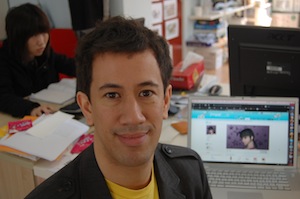 Back in May,
Back in May, 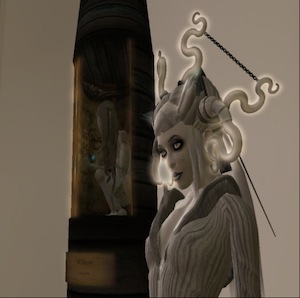 A fortnight or so ago
A fortnight or so ago 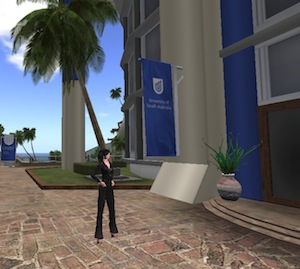
 Denlee: Actually it was the reverse. Some saw it as inappropriate because it was too much like play – almost as if they had preconceived ideas about what is a valid or authentic learning environment.
Denlee: Actually it was the reverse. Some saw it as inappropriate because it was too much like play – almost as if they had preconceived ideas about what is a valid or authentic learning environment.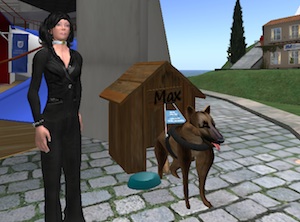 Denlee: We will no doubt continue to maintain our UniSA island here – we are planning to trial using our island to facilitate career building – running careers fairs and so on. We are also undertaking research in the area of performing arts and hybrid performance. Intermediality – where actors on a “real life†stage perform with actors in SL.
Denlee: We will no doubt continue to maintain our UniSA island here – we are planning to trial using our island to facilitate career building – running careers fairs and so on. We are also undertaking research in the area of performing arts and hybrid performance. Intermediality – where actors on a “real life†stage perform with actors in SL.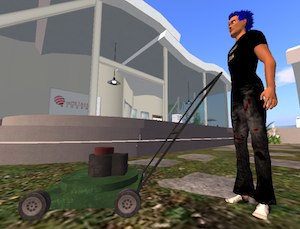 Although it’s mostly a throwback to the mid to late 20th Century, there’s still a significant cohort of Australians who associate mowing the lawn with the ‘Aussie lifestyle’ (I hate generalisations, but bear with me). There’s no shortage of people who still dream of owning their own land, on which they can inflict the weekly spring and summer routine of mowing the lawn. Last weekend I had the opportunity to do some lawn mowing, and it occurred to me that for widepsread adoption of virtual environments to occur, the in-world experience needs to be a lot more like mowing the lawn. Keep reading to see a metaphor beaten within an inch of its life.
Although it’s mostly a throwback to the mid to late 20th Century, there’s still a significant cohort of Australians who associate mowing the lawn with the ‘Aussie lifestyle’ (I hate generalisations, but bear with me). There’s no shortage of people who still dream of owning their own land, on which they can inflict the weekly spring and summer routine of mowing the lawn. Last weekend I had the opportunity to do some lawn mowing, and it occurred to me that for widepsread adoption of virtual environments to occur, the in-world experience needs to be a lot more like mowing the lawn. Keep reading to see a metaphor beaten within an inch of its life.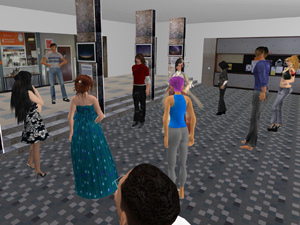 The mini-launch of the UWA sims occurred in August, well before the campus was complete. Jayjay Zifanwe and Ted Snell worked feverishly for several weeks and at least one whole weekend to ready the Astronomy art gallery in the SL Physics building for the occasion.
The mini-launch of the UWA sims occurred in August, well before the campus was complete. Jayjay Zifanwe and Ted Snell worked feverishly for several weeks and at least one whole weekend to ready the Astronomy art gallery in the SL Physics building for the occasion.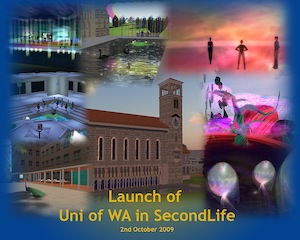 On the launch day of the UWA sims, 40 people attended the ceremony as avatars in Second Life, and 120 people packed into a RL space to attend. The people in the physical space were able to follow the proceedings in SL; the SL folk able to view the video kindly relayed the action for the other people unable to view the video through SL.
On the launch day of the UWA sims, 40 people attended the ceremony as avatars in Second Life, and 120 people packed into a RL space to attend. The people in the physical space were able to follow the proceedings in SL; the SL folk able to view the video kindly relayed the action for the other people unable to view the video through SL.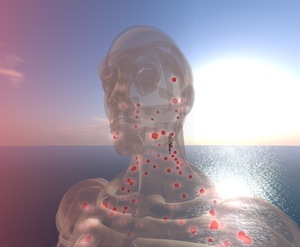 Roche Integrated Support Entourage Unique & Personal Our Mission, or
Roche Integrated Support Entourage Unique & Personal Our Mission, or 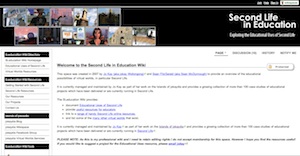 I’ve had the pleasure of having a chat to Jokay Wollongong in RL on one occasion, and hope to again in the future. I was more than aware of her work in Second Life prior to that catch-up, but only then did I realise her passion for the work she does. Sure, it’s part of making a living but it’s also a lot more than that – she is fundamentally driven by seeing the outcomes virtual environments can provide in education. In that, she’s no different to hundreds of other educators in Second Life.
I’ve had the pleasure of having a chat to Jokay Wollongong in RL on one occasion, and hope to again in the future. I was more than aware of her work in Second Life prior to that catch-up, but only then did I realise her passion for the work she does. Sure, it’s part of making a living but it’s also a lot more than that – she is fundamentally driven by seeing the outcomes virtual environments can provide in education. In that, she’s no different to hundreds of other educators in Second Life.
Recent Comments